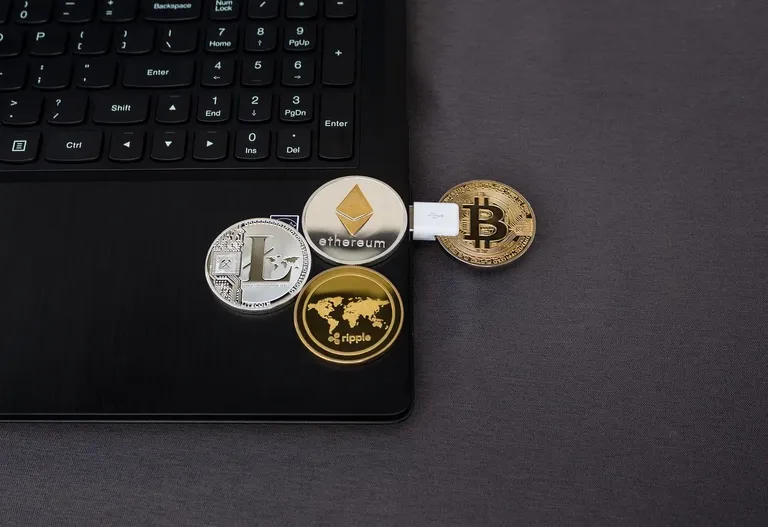The Future of Cryptocurrency: 5 Predictions for 2023

Cryptocurrency has come a long way since the launch of Bitcoin in 2009. While still a relatively new and highly volatile asset class, cryptocurrency has garnered a significant amount of attention and investment in recent years. As we look to the future, what can we expect from the cryptocurrency market in 2023 and beyond? Here are five predictions:
1. Increased Adoption of DeFi
Decentralized finance, or DeFi, refers to the use of blockchain technology to enable financial transactions without the need for traditional intermediaries such as banks. DeFi platforms offer a range of financial services, including lending, borrowing, and trading, and have gained significant traction in recent years.
In 2023, it is expected that DeFi will continue to grow in popularity, as more individuals and institutions turn to these platforms for financial services. One of the main drivers of this growth is the increasing accessibility of DeFi. In the past, DeFi was only accessible to those with a high level of technical expertise. However, recent developments have made DeFi more user-friendly, making it easier for the average person to access and use these platforms.
Another factor that is expected to drive the growth of DeFi is the increasing demand for alternative financial services. The traditional financial system has come under scrutiny in recent years due to issues such as high fees and slow transaction times. DeFi offers a more efficient and cost-effective alternative, which is expected to attract more users in the coming years.
2. Greater Regulation of Cryptocurrencies
As cryptocurrencies become more mainstream, it is expected that governments and regulatory bodies will increasingly seek to impose rules and regulations on the industry. This could potentially bring more stability and legitimacy to the market, but could also pose challenges for cryptocurrency companies and users.
One of the main reasons for increased regulation is the risk of financial crime associated with cryptocurrencies. The anonymity of many cryptocurrencies makes them a potential tool for money laundering and other illegal activities. As such, it is likely that regulators will seek to implement stricter rules and oversight to combat these risks.
Increased regulation could also potentially bring more clarity to the cryptocurrency market, which has been characterized by a high level of uncertainty. Clear rules and regulations could make it easier for investors to understand the risks and potential rewards of investing in cryptocurrencies, potentially leading to more investment.
However, increased regulation could also pose challenges for the cryptocurrency industry. Strict rules and oversight could be burdensome for cryptocurrency companies, and may limit their ability to innovate. In addition, overly strict regulation could stifle the growth of the industry and potentially drive users away from cryptocurrencies.
3. The Rise of NFTs
Non-fungible tokens, or NFTs, are digital assets that are unique and cannot be replaced with another identical asset. In 2023, it is expected that NFTs will become more popular, particularly in the art and collectibles market.
One of the main benefits of NFTs is their ability to verify the ownership and authenticity of digital items. In the past, it has been difficult to prove ownership of digital assets, leading to issues such as counterfeiting and theft. NFTs offer a solution to this problem by allowing for the verification of ownership on the blockchain.
The use of NFTs could potentially revolutionize the way that digital assets are bought and sold. For example, NFTs could be used to sell exclusive digital artworks or other collectibles, allowing for the creation of new revenue streams for artists and collectors.
4. Growing Interest in Privacy Coins
Privacy coins, such as Monero and Zcash, are cryptocurrencies that prioritize the privacy of their users by obscuring transaction details. As concerns about data privacy continue to grow, it is expected that there will be increasing demand for privacy coins in 2023.
One of the main reasons for the growing interest in privacy coins is the increasing amount of personal data that is being collected and shared online. Many individuals are becoming more aware of the potential risks associated with sharing their personal data and are looking for ways to protect their privacy. Privacy coins offer a solution by allowing users to make transactions without revealing their personal information.
Another factor driving the interest in privacy coins is the increasing use of cryptocurrency for illegal activities. While the vast majority of cryptocurrency transactions are legitimate, the anonymity of some cryptocurrencies has made them a popular choice for those engaged in illegal activities such as money laundering and drug trafficking. As a result, law enforcement agencies have been cracking down on the use of certain cryptocurrencies, leading to increased interest in privacy coins as a way to protect against these risks.
5. The Emergence of Central Bank Digital Currencies
In recent years, several central banks, including the People's Bank of China and the European Central Bank, have been exploring the creation of their own digital currencies. If these efforts are successful, it could potentially lead to greater adoption of digital currencies and a shift away from traditional fiat money.
One of the main benefits of central bank digital currencies (CBDCs) is their potential to improve the efficiency and accessibility of the financial system. CBDCs could potentially be used to facilitate faster and cheaper transactions, and could be made available to a wider range of individuals, including those who are currently unbanked.
CBDCs could also potentially bring greater stability to the financial system. By allowing central banks to directly control the supply of money, CBDCs could potentially help to prevent financial crises such as those caused by the overproduction of fiat money.
However, the adoption of CBDCs is not without its challenges. One concern is the potential loss of privacy, as central banks would have greater visibility into individuals' financial transactions. There are also concerns about the impact on traditional financial institutions, such as banks, and the potential for CBDCs to disrupt the current financial system. It remains to be seen how these challenges will be addressed and what the ultimate impact of CBDCs will be.










